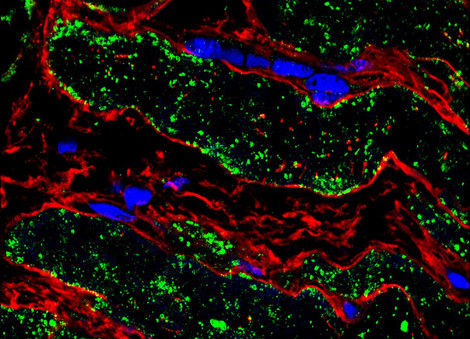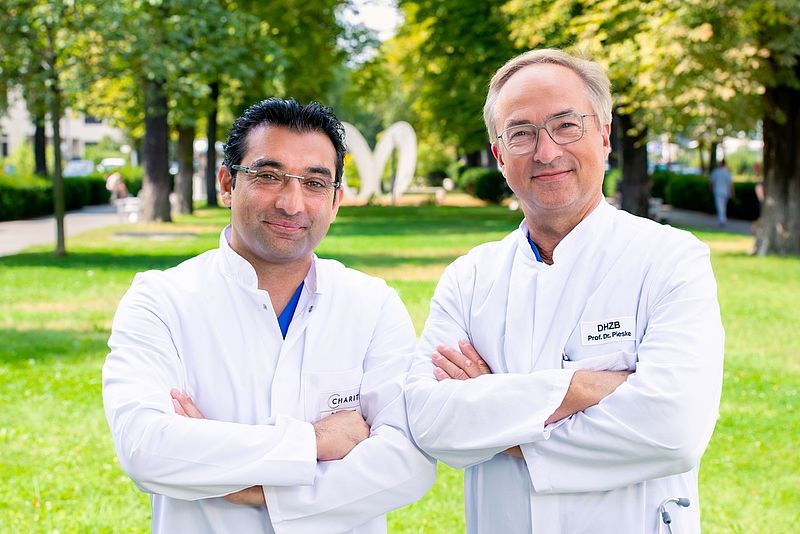According to the World Health Organisation (WHO), around 27% of the world's population suffers from a severe iron deficiency, which often leads to anaemia. In anaemia, the number of red blood cells is so low that the blood can no longer transport enough oxygen to the body. Patients with iron deficiency often suffer from exhaustion, weakness and pallor, even shortness of breath and chest pain. If they also suffer from heart failure, iron deficiency exacerbates the symptoms and worsens the prognosis. Around 50 per cent of patients with heart failure have an iron deficiency due to a defect in iron absorption, circulation and excretion in the intestine. In addition to this iron absorption defect in the intestine, there are other mechanisms that ensure iron absorption in individual cells. However, these have been largely unknown in heart muscle cells until now.
This is where the research team led by Priv.-Doz. and DZHK scientist Dr. Antje Ebert, last author of the study and group leader of the "Cardiovascular Cell Biology and Systems Medicine" working group at the Heart Centre of the University Medical Centre Göttingen (UMG), comes in. The scientists have discovered that patients with a pathological enlargement of the heart muscle, dilated cardiomyopathy, have an iron uptake defect. This defect not only affects the uptake of iron into the heart muscle cells, but also its processing and related metabolic processes, such as the energy supply to the cells.
The defective iron uptake can be traced back to certain mutations," says Dr. Yuanyuan Dai, first author of the study. "Hereditary, disease-causing mutations provide an opportunity to understand the molecular dysfunctions in heart muscle cells of patients with pathological myocardial dilation. In addition, we analysed patient tissue taken during heart surgery. It was important that we could also detect parts of the defective iron transport pathway in patients' tissue as a comparison," says Dr Dai. Using a highly sensitive mass spectrometry method, the researchers in Göttingen analysed the pathologically altered heart muscle cells and the heart tissue from patients with dilated cardiomyopathy. They then determined the existing signalling pathways and protein functions within these cells. They identified the defect in clathrin-mediated endocytosis in the cells as a central aspect of the new disease mechanism. This was the case both in the heart muscle cells generated in the laboratory and in the heart tissue removed from the patients.
At the same time, the research group was able to show that the function of this transport pathway can be restored in three different ways: by administering additional iron, a special molecular compound that "repairs" the transport pathway, or with the help of gene editing (CRISPR-Cas), a procedure for targeted modification of the genetic material. The newly gained knowledge will now be used to research possible therapeutic approaches for affected patients.
"I am delighted about the publication of the study by Priv.-Doz. Dr. Antje Ebert, who, together with her colleagues, is carrying out important research work in Göttingen. With the new findings on the processes of iron uptake into the heart muscle cells and their malfunctions in dilated cardiomyopathy, new therapeutic approaches for those affected may now be possible in the future," says Prof. Dr. Gerd Hasenfuß, Director of the Department of Cardiology and Pneumology and Chairman of the Heart Centre at the University Medical Centre Göttingen.
Original publication: An Alternative Mechanism of Subcellular Iron Uptake Deficiency in Cardiomyocytes (Dai et al., 2023)
Scientific contact: Priv.-Doz. Antje Ebert (antje.eber(at)med.uni-goettingen.de), Working Group "Cardiovascular Cell Biology and Systems Medicine", Heart Centre, University Medical Centre Göttingen
Source: Press release UMG (in German only)



